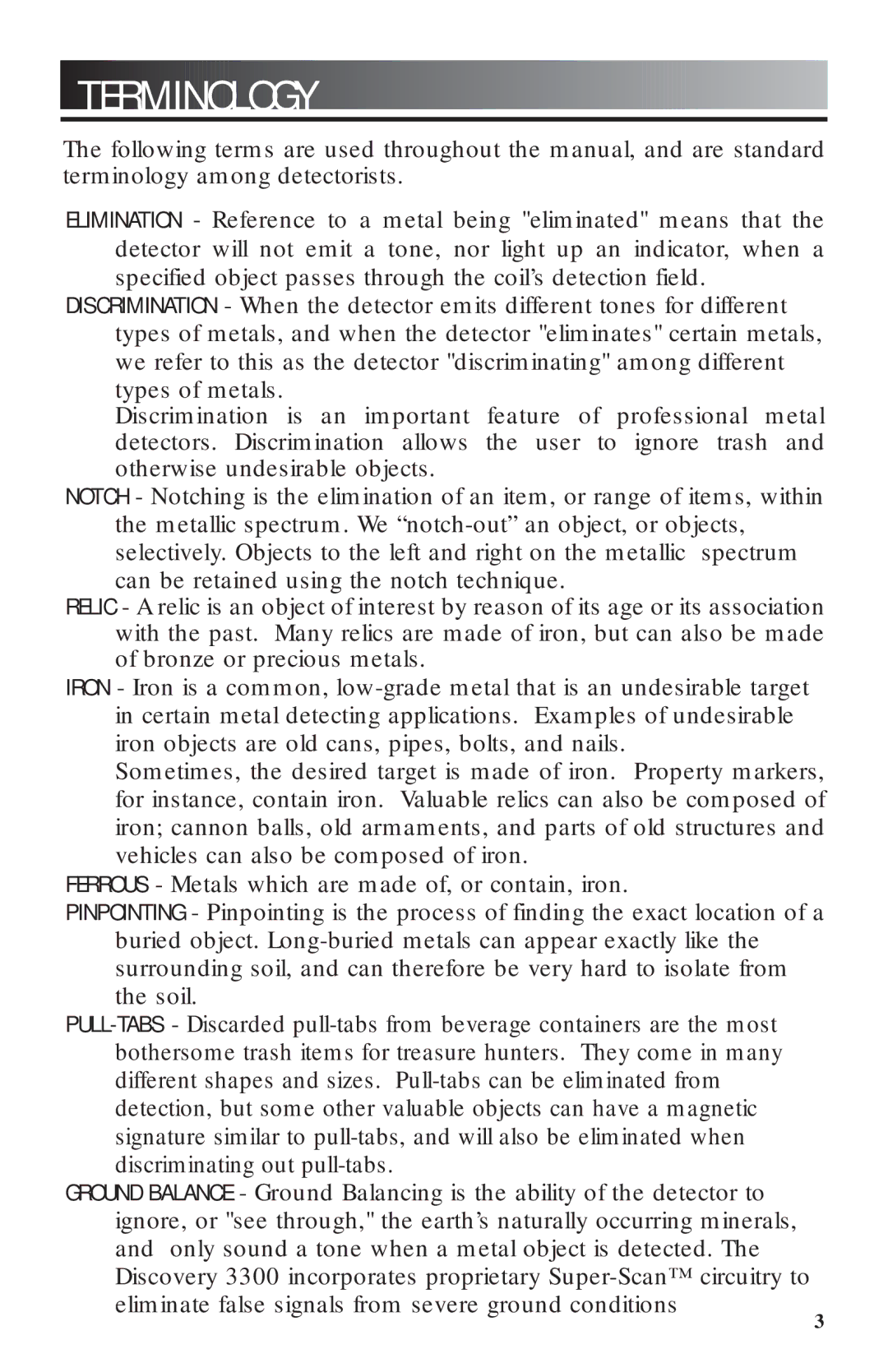
 TERMINOLOGY
TERMINOLOGY




























































The following terms are used throughout the manual, and are standard terminology among detectorists.
ELIMINATION - Reference to a metal being "eliminated" means that the detector will not emit a tone, nor light up an indicator, when a specified object passes through the coil’s detection field.
DISCRIMINATION - When the detector emits different tones for different types of metals, and when the detector "eliminates" certain metals, we refer to this as the detector "discriminating" among different types of metals.
Discrimination is an important feature of professional metal detectors. Discrimination allows the user to ignore trash and otherwise undesirable objects.
NOTCH - Notching is the elimination of an item, or range of items, within the metallic spectrum. We
can be retained using the notch technique.
RELIC - A relic is an object of interest by reason of its age or its association with the past. Many relics are made of iron, but can also be made of bronze or precious metals.
IRON - Iron is a common,
Sometimes, the desired target is made of iron. Property markers, for instance, contain iron. Valuable relics can also be composed of iron; cannon balls, old armaments, and parts of old structures and vehicles can also be composed of iron.
FERROUS - Metals which are made of, or contain, iron.
PINPOINTING - Pinpointing is the process of finding the exact location of a buried object.
GROUND BALANCE - Ground Balancing is the ability of the detector to ignore, or "see through," the earth’s naturally occurring minerals, and only sound a tone when a metal object is detected. The Discovery 3300 incorporates proprietary
3
